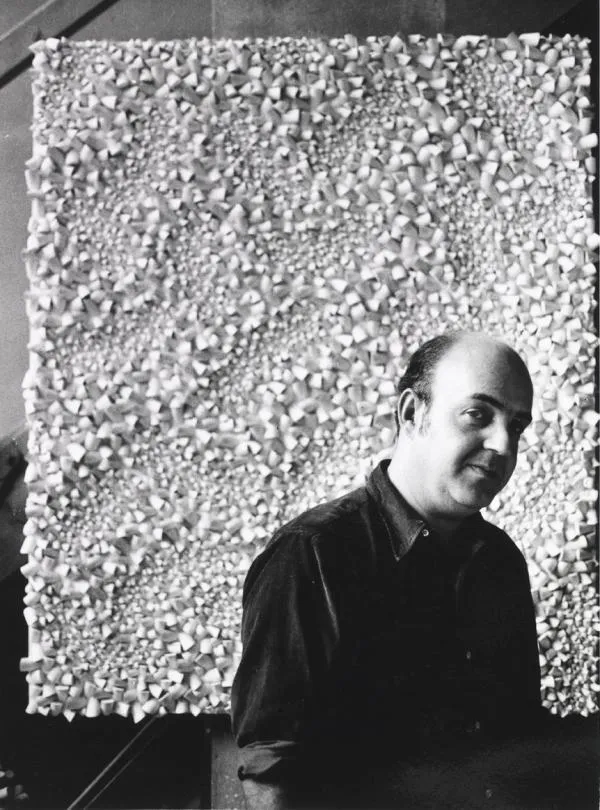
Sérgio de Camargo (1930–1990) was a Brazilian sculptor renowned for his minimalist reliefs and sculptures that explore the interplay of light, shadow, and geometric form. Born in Rio de Janeiro, he studied at the Academia Altamira in Buenos Aires under Emilio Pettoruti and Lucio Fontana, and later pursued philosophy at the Sorbonne in Paris. During his time in Europe, he encountered influential artists such as Constantin Brâncuși, Hans Arp, Henri Laurens, and Georges Vantongerloo, which profoundly impacted his artistic development. Camargo's signature works feature monochromatic white surfaces composed of cylindrical or prismatic elements, creating dynamic visual effects through the manipulation of light and shadow. His innovative approach earned him international acclaim, including the International Sculpture Prize at the 1963 Paris Biennale. Camargo's art was showcased in prominent exhibitions like the 1965 São Paulo Biennale, the 1966 Venice Biennale, and the 1968 Documenta in Kassel. His works are part of major collections worldwide, including the Tate Modern in London. Camargo passed away in Rio de Janeiro in 1990, leaving behind a legacy that continues to influence contemporary sculpture.
To provide the best experiences, we use technologies like cookies to store and/or access device information. Consent to these technologies will allow us to process data such as browsing behavior or unique IDs on this site. Not consenting or withdrawing consent may negatively affect certain features and functions.
Market reports for visionary collectors and insiders.